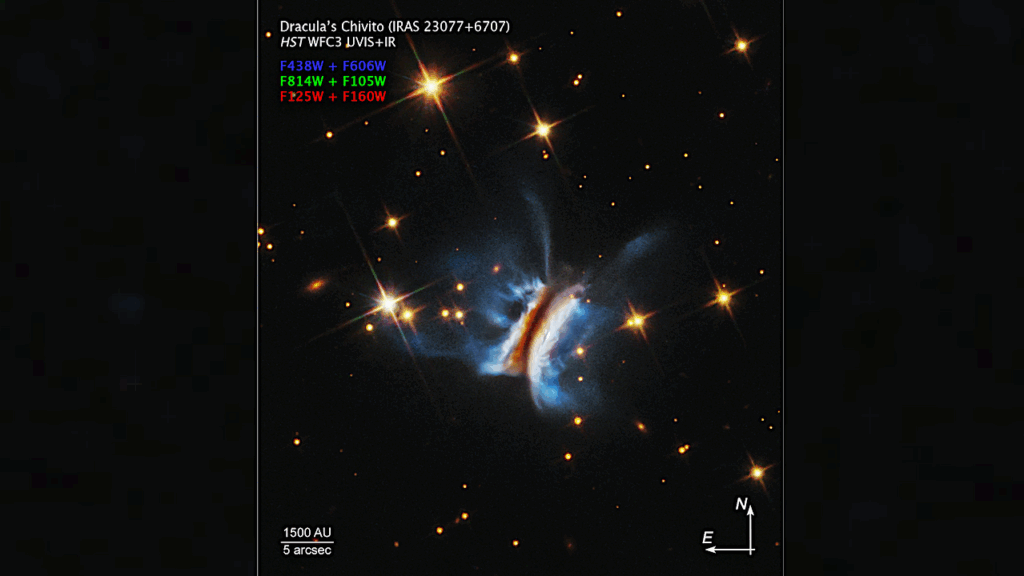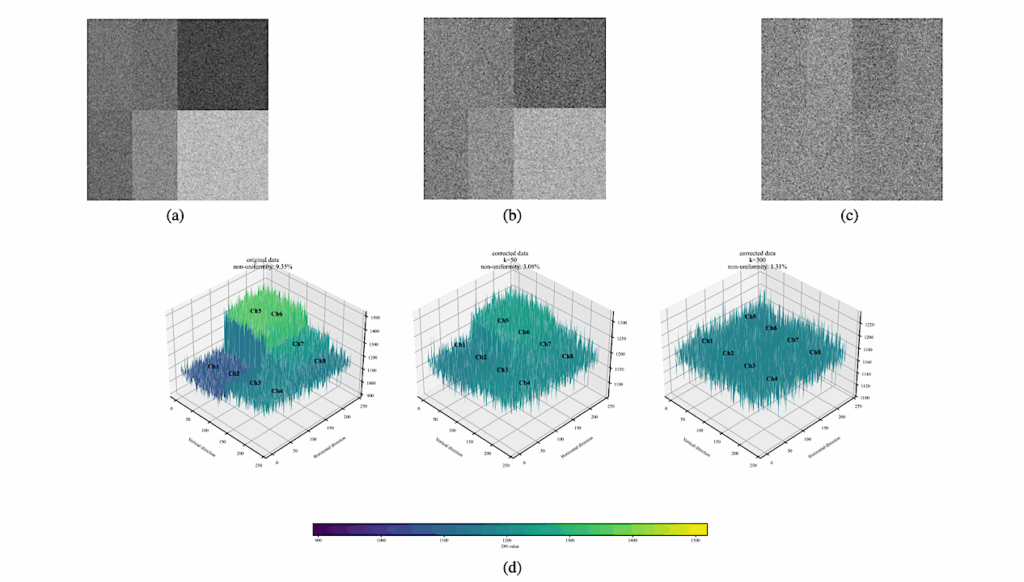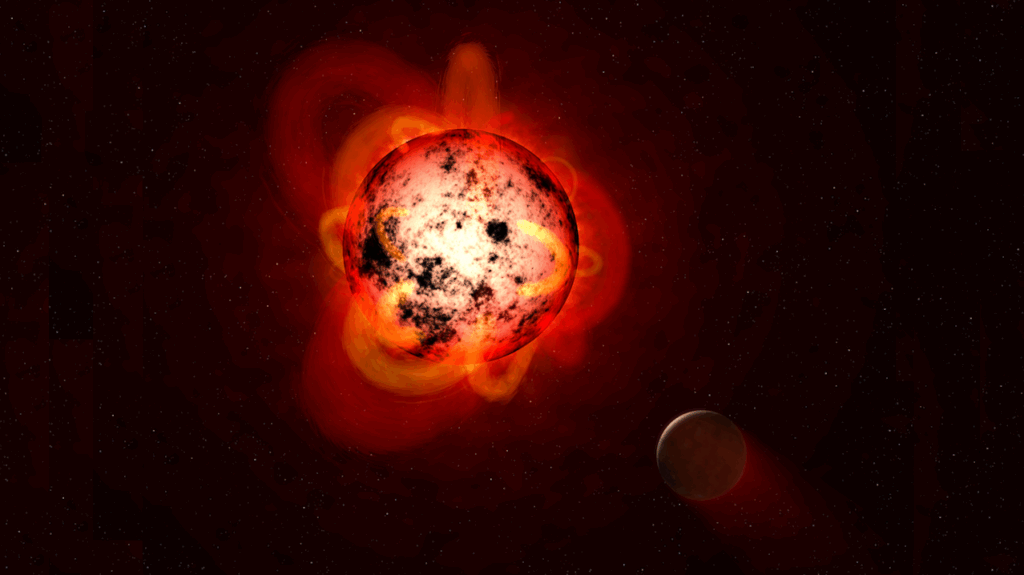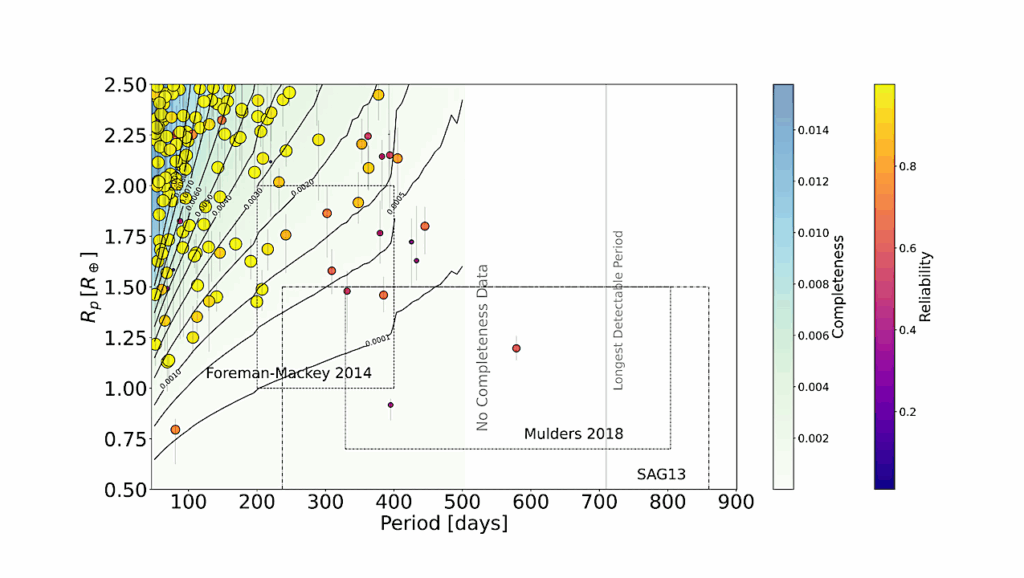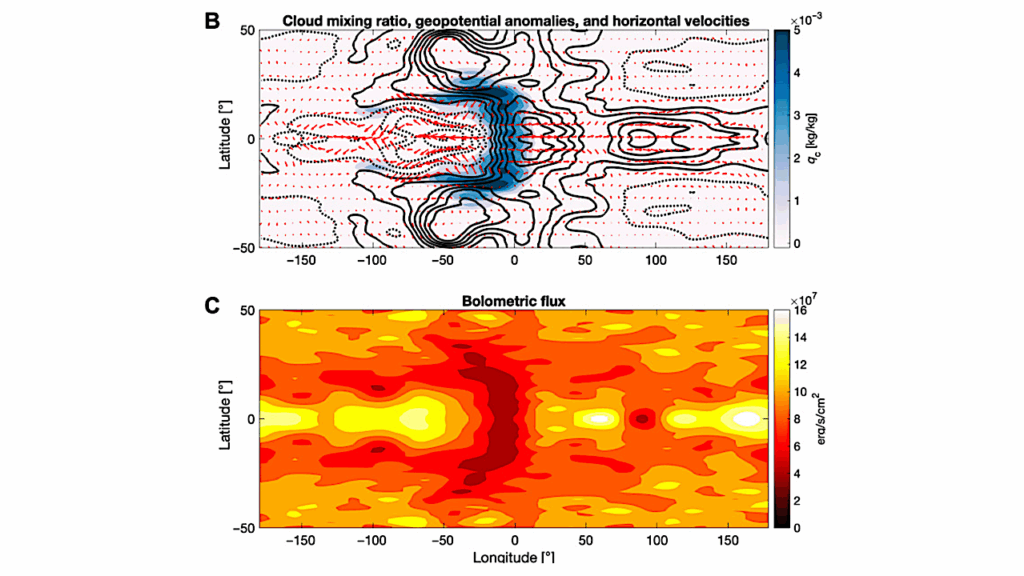Inner Habitable Zone Boundary For Eccentric Exoplanets

The climate of a planet can be strongly affected by its eccentricity due to variations in the stellar flux.
There are two limits for the dependence of the inner habitable zone boundary (IHZ) on eccentricity: (1) the mean-stellar flux approximation (SIHZ∝1−e2‾‾‾‾‾‾√), in which the temperature is approximately constant throughout the orbit, and (2) the maximum-stellar flux approximation (SIHZ∝(1−e)2), in which the temperature adjusts instantaneously to the stellar flux.
Which limit is appropriate is determined by the dimensionless parameter Π=CBP, where C is the heat capacity of the planet, P is the orbital period, and B=∂Ω∂Ts, where Ω is the outgoing longwave radiation and Ts is the surface temperature. We use the Buckingham Π theorem to derive an analytical function for the IHZ in terms of eccentricity and Π. We then build a time-dependent energy balance model to resolve the surface temperature evolution and constrain our analytical result.
We find that Π must be greater than about ∼1 for the mean-stellar flux approximation to be nearly exact and less than about ∼0.01 for the maximum-stellar flux approximation to be nearly exact. In addition to assuming a constant heat capacity, we also consider the effective heat capacity including latent heat (evaporation and precipitation). We find that for planets with an Earth-like ocean, the IHZ should follow the mean-stellar flux limit for all eccentricities. This work will aid in the prioritization of potentially habitable exoplanets with non-zero eccentricity for follow-up characterization.
Xuan Ji, Nora Bailey, Daniel Fabrycky, Edwin S. Kite, Jonathan H. Jiang, Dorian S. Abbot
Comments: Submitted to ApJL
Subjects: Earth and Planetary Astrophysics (astro-ph.EP)
Cite as: arXiv:2211.07883 [astro-ph.EP] (or arXiv:2211.07883v1 [astro-ph.EP] for this version)
https://doi.org/10.48550/arXiv.2211.07883
Focus to learn more
Submission history
From: Xuan Ji
[v1] Tue, 15 Nov 2022 04:17:31 UTC (273 KB)
https://arxiv.org/abs/2211.07883
Astrobiology


